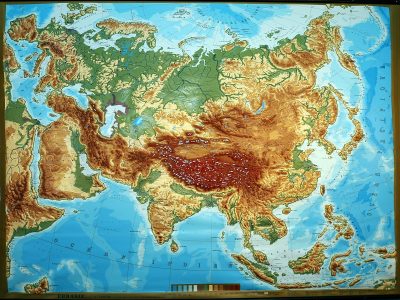The Rise of the Eurasian Century. The China -India -Pakistan Triangle
China, India, Pakistan, and Russia all share the same goal of improving connectivity between them and their many partners, with their visions increasingly converging in light of the latest events.

All Global Research articles can be read in 27 languages by activating the “Translate Website” drop down menu on the top banner of our home page (Desktop version).
***
Fast-moving recent developments inspire hope that the Eurasian Century is rising a lot quicker than even the most optimistic observers could have expected. The relevant events are last month’s Chinese-Indian synchronized disengagement and the Indian-Pakistani ceasefire, the US’ threats to sanction India for its planned purchase of Russia’s S-400 air defense systems, the scandals that America provoked last week with China and Russia, last week’s inaugural Islamabad Security Dialogue, and the latest progress in resolving the Afghan War. The importance of all five will now be briefly discussed prior to putting them into the larger strategic context.
The China-India-Pakistan triangle over the UNSC-recognized disputed territory of Kashmir always had a high conflict potential, which the world was reminded of during the Indian-Pakistani air battle of February 2019 and last summer’s Chinese-Indian clashes in the Galwan River Valley.
All sides to their credit realized that their interests are best served by stabilizing the tense situation there through last month’s earlier mentioned synchronized disengagement and ceasefire. This de-escalates everything and creates a conductive environment for peacefully resolving their disagreements.
The US’ repeated threats to sanction India for its planned purchase of Russia’s S-400 air defense systems will also improve the security situation in Eurasia, as strange as it may sound. India must by now realize that the US isn’t as reliable of an ally as some in the country had previously thought. America is attaching unacceptable political, economic, and strategic strings to military cooperation with India through the Quad that many suspect is tacitly aimed at containing China. Should Washington go through with its threats, then New Delhi might in turn take a step back from the Quad, which would by default further improve Chinese-Indian relations.
Last week’s Anchorage meeting between Chinese and American diplomats ended with the latter patronizingly talking down to the former and thus preventing a lot of meaningful progress from being made. In addition, US President Joe Biden’s agreement with an interviewer who asked him whether he thought that Russian President Vladimir Putin was a “killer” prompted Moscow to recall its ambassador for the first time since 1998. Coincidentally, Russia’s Foreign Minister visited Beijing this week to discuss strengthening bilateral ties, which aren’t aimed against any third party such as the US but are only intended to improve the situation in Eurasia.
The inaugural Islamabad Security Dialogue was also held last week and saw Prime Minister Imran Khan, Foreign Minister Shah Mahmood Qureshi, and Chief Of Army Staff General Qamar Javed Bajwa jointly present Pakistan’s new multipolar grand strategy. Importantly, Islamabad encouraged New Delhi to take the first step towards resolving their dispute over Kashmir in order for Pakistan to then facilitate Indian connectivity with Afghanistan, the Central Asian Republics, and beyond (perhaps as far as Russia and the EU too). This very friendly outreach could revolutionize Eurasia’s economic connectivity capabilities if India positively responds to Pakistan.
Finally, the recent progress that’s been made on peacefully resolving the Afghan War could unlock the potential for Central Asian-South Asian connectivity. This is especially so when considering last month’s agreement between Pakistan, Afghanistan, and Uzbekistan to construct a railway between them. Keeping in mind the Pakistani political, diplomatic, and military leaderships’ unprecedented joint outreach to India last week, then the plausible possibility exists of finally pioneering a Central Asian-South Asian connectivity corridor upon the eventual end of the Afghan War. This would unquestionably be to all of the Eurasian supercontinent’s benefit.
Altogether, the fast-moving developments of recent weeks strongly point to the rise of the Eurasian Century. China, India, Pakistan, and Russia all share the same goal of improving connectivity between them and their many partners, with their visions increasingly converging in light of the latest events.
The best-case scenario is that the Chinese-Indian synchronized disengagement and Indian-Pakistani ceasefire hold in parallel with meaningful progress being made on resolving the Afghan War and the Kashmir dispute. That outcome would enable all players to more easily resist the US’ divide-and-rule schemes and thus ensure a win-win future for all.
*
Note to readers: please click the share buttons above or below. Forward this article to your email lists. Crosspost on your blog site, internet forums. etc.
This article was originally published on OneWorld.
Andrew Korybko is an American Moscow-based political analyst specializing in the relationship between the US strategy in Afro-Eurasia, China’s One Belt One Road global vision of New Silk Road connectivity, and Hybrid Warfare. He is a frequent contributor to Global Research.
Featured image is from OneWorld



No comments:
Post a Comment